 When a traveler is browsing in Kraton, then she/he should not miss The Water Castle or known as Tamansari, less than 1 Km west of Kraton. Just west of the Kraton, are the ruins, pools, arches and underground passages of the former pleasure gardens. It was built in 1758 by Sultan Hamengkubuwono I as a rest house and pleasure park for the Royal family. Tamansari means beautiful garden. It was badly damaged due to an earthquake in 1867. Some parts of it, for instance "Umbul Binangun" bathing pools have been restored.
When a traveler is browsing in Kraton, then she/he should not miss The Water Castle or known as Tamansari, less than 1 Km west of Kraton. Just west of the Kraton, are the ruins, pools, arches and underground passages of the former pleasure gardens. It was built in 1758 by Sultan Hamengkubuwono I as a rest house and pleasure park for the Royal family. Tamansari means beautiful garden. It was badly damaged due to an earthquake in 1867. Some parts of it, for instance "Umbul Binangun" bathing pools have been restored.
Upon seeing the ruins of Taman Sari, some cultural experts say that it has multi purposed functions, such as:
1. A Rest house, in the form of water castle with beautiful park. The air is fresh due to:
Artificial lakes and canals
Bathing pools
Large gardens with several kind of varieties of trees
2. A place for sport and entertainment
Boating and swimming
Deer hunting
Classical dance Bedoyo and Srimpi
Gamelan music
3. A place for meditation
4. An important palace and shelter for the Sultan. It was well protected. It had 2 Bastions
with 12 and 6 Cannons.
The Castle itself divided into two (2) complexes. They are:
1. Umbul Binangun - swimming pool complex
It is the swimming pool where only the Sultans women can frolic. In this complex only woman employees serve the Sultan. Theres also a three story tower, with Sultan private bedroom stands south of the swimming pool and The Sultans private bath-pool is behind the tower. Somewhere in the south part of the palace, there is a special place, believed to be Sultans meeting place, from time to time with the Goddess of the South Sea, Kanjeng Ratu Kidul.
2. Pulo Kenongo - Complex
Pulo Kenongo, the Palace of Kenongo Island was found in the middle of Segaran Taman Sari. (Taman Sari artificial lake, which was connected by water canal to the other artificial lake nearby the kraton) Kenongo is a name of flower trees planted in the front yard, where the fragrance spread out in the palace. Just like in a palace, there were living rooms, bedrooms, rooms to make Batik, a hall to perform classical sacred dance of Bedoyo and Srimpi, gates and sentry-boxes guarded strongly by the palace soldiers.
To Stay
Tourist who wants to stay in the heart of the city has many choices since there are a lot of star and non-star hotels available.
To Buy
Pasar Ngasem - Bird Market, here is a market place which sells several kinds of cute birds and pets. Traditional products and household earthenwares are also sold here. In this area Batik Painters do not only sell their products, but some also give instruction in this art. Art shops and galleries of medium quality can be found allong the alleys.
Pasar Ngasem - Bird Market, here is a market place which sells several kinds of cute birds and pets. Traditional products and household earthenwares are also sold here. In this area Batik Painters do not only sell their products, but some also give instruction in this art. Art shops and galleries of medium quality can be found allong the alleys.
To Eat
There are many local 'warungs' (food stalls) that serve local foods. You can try one of the famous Yogyakarta local dish calledGudeg, a curry of jackfruit, chicken and egg served with rice.
There are many local 'warungs' (food stalls) that serve local foods. You can try one of the famous Yogyakarta local dish calledGudeg, a curry of jackfruit, chicken and egg served with rice.


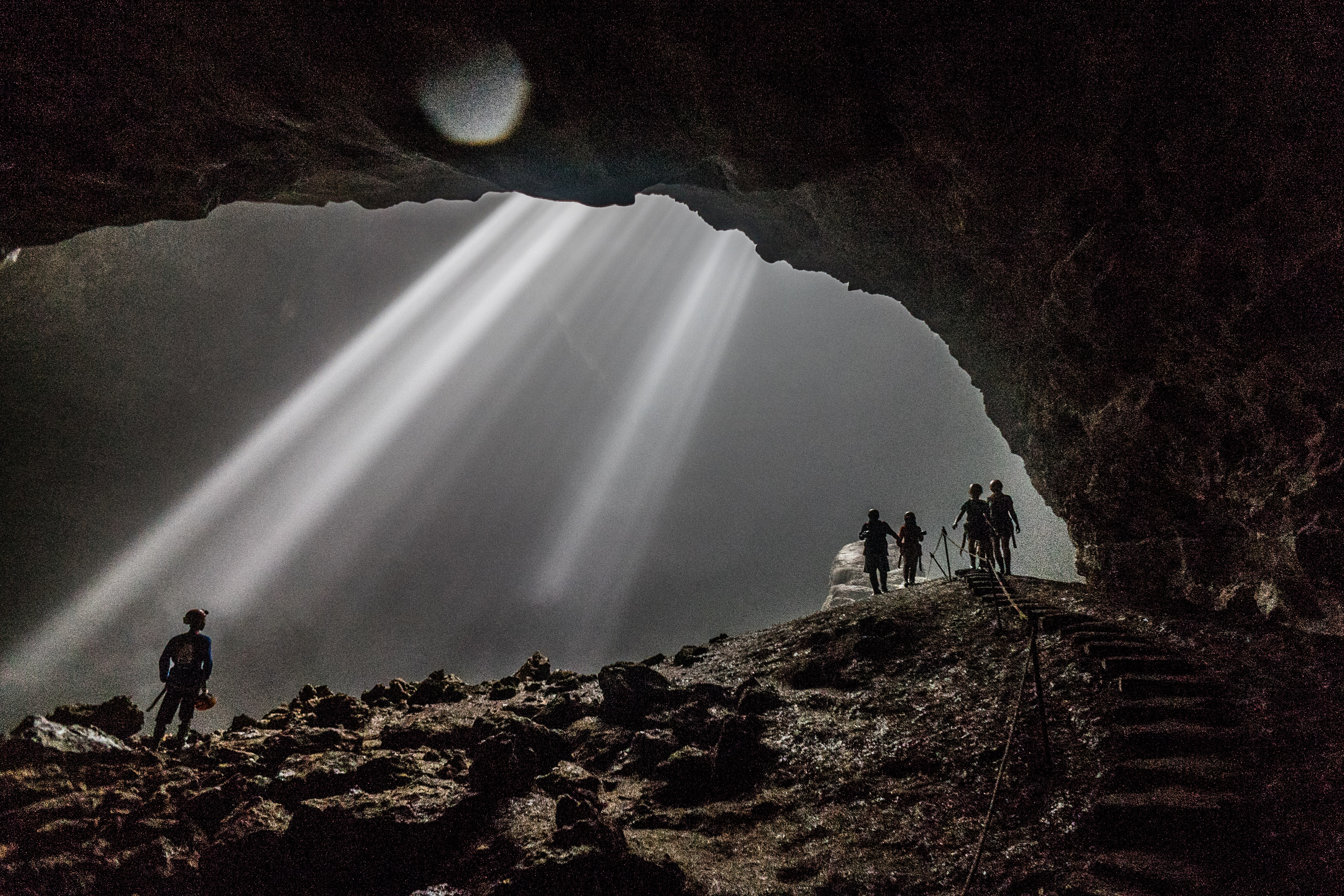







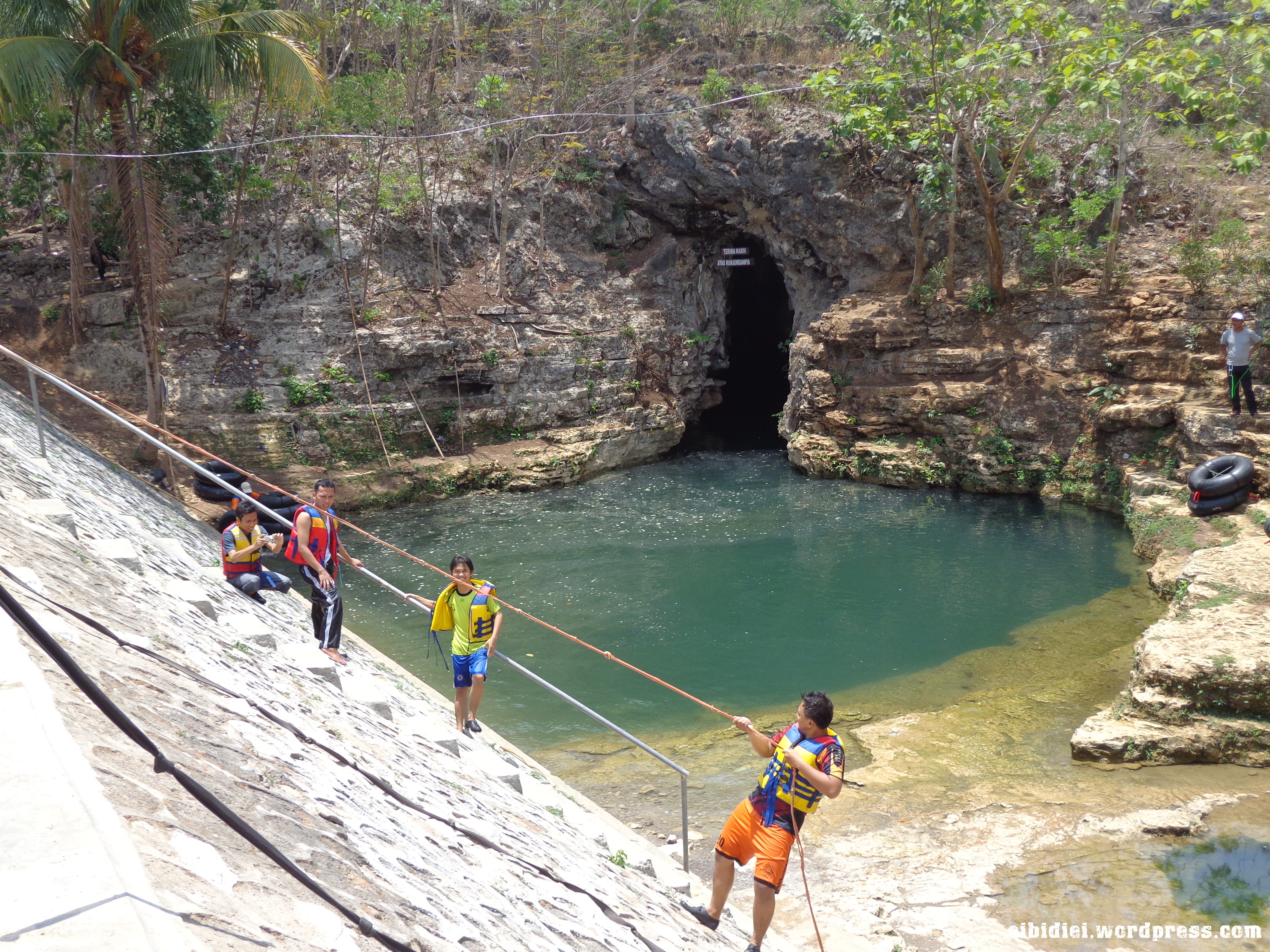

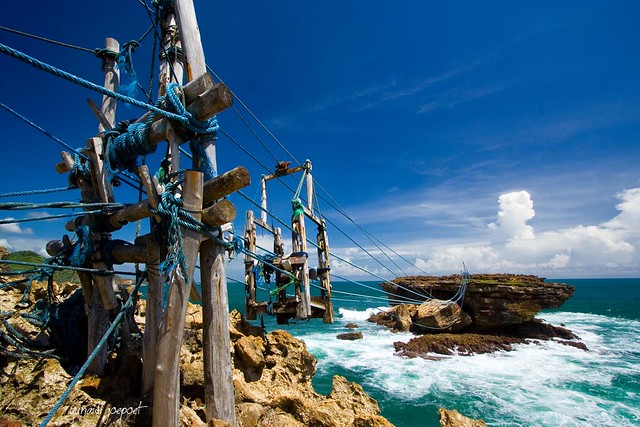 Timang Beach is located in anggolo, Purwodadi, Tepus, Gunung kidul, Yogyakarta. Same locatin with
Timang Beach is located in anggolo, Purwodadi, Tepus, Gunung kidul, Yogyakarta. Same locatin with 










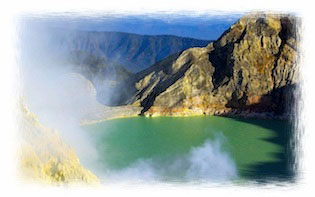




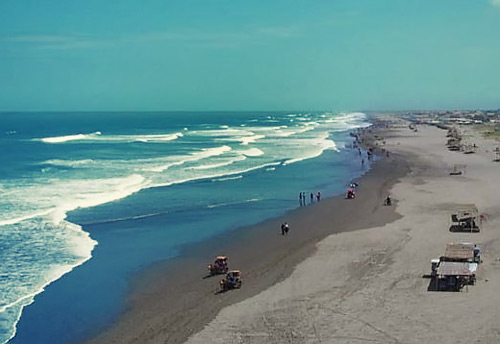






 As the largest Hindu temple in Southeast Asia, the beautiful and graceful temple of Prambanan is a magnificent spectacle and an icon of Indonesia’s cultural heritage.
As the largest Hindu temple in Southeast Asia, the beautiful and graceful temple of Prambanan is a magnificent spectacle and an icon of Indonesia’s cultural heritage..jpg) that the work must be completed before the rooster crowed, something she believed was impossible. But with the help of genies and his own magical powers, Bondowoso managed to complete 999 temples. Panicked, Jonggrang told the women of her village to start pounding rice so that the rooster would wake up and begin to crow. When Bondowoso heard this he was deeply disappointed and wildly enraged. When he found out that Roro Jonggrang had made the roosters crow, he turned her into stone, The statue of a slender virgin graces the main Prambanan temple, while a group of temples nearby is called the Candi Sewu or the Thousand Temples.
that the work must be completed before the rooster crowed, something she believed was impossible. But with the help of genies and his own magical powers, Bondowoso managed to complete 999 temples. Panicked, Jonggrang told the women of her village to start pounding rice so that the rooster would wake up and begin to crow. When Bondowoso heard this he was deeply disappointed and wildly enraged. When he found out that Roro Jonggrang had made the roosters crow, he turned her into stone, The statue of a slender virgin graces the main Prambanan temple, while a group of temples nearby is called the Candi Sewu or the Thousand Temples. The relief’s inside the temple show the epic story of Ramayana. Inside, there are also historical items such as the Lingga Batara Siwa stone, a symbol of fertility.
The relief’s inside the temple show the epic story of Ramayana. Inside, there are also historical items such as the Lingga Batara Siwa stone, a symbol of fertility.
 Yogyakarta (or Jogjakarta) has been known as The Neverending Asia. Many say that a single visit to Jogja is never enough.
Yogyakarta (or Jogjakarta) has been known as The Neverending Asia. Many say that a single visit to Jogja is never enough. Indonesia has several traditions and customs and it is best if you know them beforehand. Some of them are:
Indonesia has several traditions and customs and it is best if you know them beforehand. Some of them are: Bahasa Indonesia is relatively simple and by using a few phrases or sentences, you’ll be more appreciated and respected. You can find Indonesian phrase books in good book shops.
Bahasa Indonesia is relatively simple and by using a few phrases or sentences, you’ll be more appreciated and respected. You can find Indonesian phrase books in good book shops.

